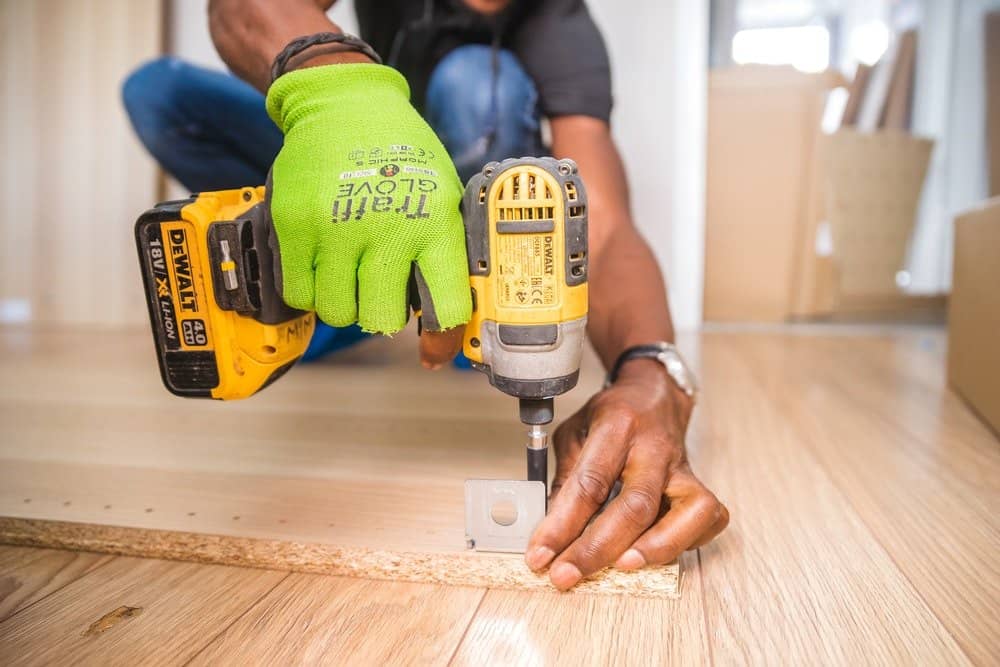AD | Featured
There are plenty of reasons why people buy a fixer-upper to renovate; for instance, older homes often have more character and tend to have more space. Which is ideal for those who love homes with charming traditional features and want and need room for their family to grow.
Additionally, compared to brand new houses, older homes are often cheaper to buy. And with no stamp duty payable by movers until March 2021, this is one more reason why people are opting to move to the house they want.
How to fix up your first family home
Whether you’ve just purchased a house that requires a lot of work. Or perhaps you’ve been in your home for a while and want to fix it up in preparation for starting a family. The below guide can give you some insight on where to begin and what to think about to ensure you have the basics ready to fix up your first family home so that’s suitable and safe for your family.
Can You Live Elsewhere For Now?
Depending on the number of repairs and work that needs doing in your new home, it may be best for you and your other half to live somewhere else for a little while. In turn, you can avoid the chaos and mess and continue with your daily routines.
If renting another place isn’t affordable, perhaps consider asking your parents if you could say with them instead. Otherwise, some people who are renovating their home rent a mobile home. Such as a caravan to park next to the property they’re fixing up. This way, they’re near the house to oversee work by the builders. And have a separate space away from the mess inside the house.

Conduct An Assessment On Your Home
Beyond figuring out where you’ll sleep while work is underway. An assessment of the condition of the inside and outside of your home is necessary.
Create a list and take photos along the way to record any problem areas.
Here are a few questions to answer during the inspection of your home. If any of the below issues are present, they can cause structural problems to the house and health issues for you.
- Are there any large cracks on the walls, missing bricks, or bowing ceiling beams?
- Are there any cracked or missing roof shillings?
- Is the floor stable?
- Are the electrics working?
- Do you have access to clean, hot running water?
- Does the heating system effectively warm the home?
- Are there any draughts, leaks, damp, mould, or pest infestations in the home?
- Do the doors and windows lock and adequately insulate the house?
- Is there any asbestos present in the attic area?
If you feel as though you need some help during the assessment, you can hire a buildings inspector who can write you a report of any issues they believe are a cause for concern.
In particular, older homes may require more work than newer homes because despite some homeowners maintaining a house to the best of their ability. Some of the materials, systems, and technology used to build the home may be outdated and need replacing.
Moreover, years of use can cause house components such as plumbing systems to deteriorate. In turn, requiring a few additional upgrades such as a Copper Press Fit or, alternatively, removing and replacing the entire system altogether.
What Jobs Need Prioritising?
Establishing problem areas in your home will put you in a better stance to develop a plan of what jobs need prioritising first.
For instance, if a plumber needs to install new pipes in your home, they’ll need access under the floorboards. Meaning arranging to have the floorboards replaced or carpet fitted would need to wait until a later date.
Equally, if there’s a damp problem brought on by a leaky pipe, fixing the pipe is the first most crucial step before attempting to sterilise and remove any mould residue. Otherwise, mould will continue to reoccur until the pipe is fixed.
Taking time to think about what order is most logical to conduct essential repairs on your home. Will prevent you from wasting time and money undoing jobs and hard work on your home.

What Repairs Can You Afford Right Now?
With your home assessment to hand and an idea of what jobs need prioritising first. It’s also essential to research how much each of the repairs on your home will cost.
Beings as you’re fixing up your home to make it fit for a family. You’ll likely want to increase the safety and longevity of your home while also adding value by investing in better, long-lasting materials and resources.
With that in mind, contact a few providers who can provide an analysis and quote for the repairs your home needs.
Contact at least three businesses per repair to gain a broad perspective of the cost, quality, and time frame for the repair to be completed. Plus, don’t forget to research the reputation of the company.
While it may be tempting to spread your budget thin across all repairs and decor to fix up your home. As mentioned above, buying cheap labour and resources could result in costlier jobs you’ll need to fix later on. Or materials in your home that won’t last.
In some cases, you may need to organise and budget the money you have to spend on fixing the priority repairs, such as changing the electrics and removing the damp and mould. And then later save up money to finish off the cosmetic jobs in your home like plastering the walls, painting, and carpets.
Beyond home repairs that require expertise and knowledge, such as electrical work, to complete. Think about what skills you and your partner can use in your new home to cut down your renovation expenses. Perhaps you’re great at wallpapering, or your father in law works as a tiler and has offered to tile the bathroom for free.
Looking for free or cost-effective ways to complete work on your home will mean you can save money and keep within your budget.

Final thoughts
Fixing up an old home to make it safe and homely for your family takes patience, dedication, and money! After all, living in a home that’s undergoing work almost every day can be quite stressful. This is why, as the first point suggests, finding somewhere else to live for a while until a large portion of the work on the home is complete is wise.
Beyond finding a temporary base, assessing your home is the single most crucial part of the renovation process, which launches the work on your home into action. By sourcing the main issues with expert assistance, you can prioritise urgent repairs that need solving first.
Of course, another factor that mustn’t be forgotten is the money aspect. Renovating a fixer-upper can be costly, which is why it’s essential to keep a close eye on the renovation budget to prevent overspending. Additionally, looking for ways you and your family can get involved with fixing up your family home will undoubtedly help keep costs down.
To keep your spirits high throughout the overhaul of your family home, ensure you take care of yourself, and keep focused on the positives and the end-result. For instance, don’t forget to embrace small and large triumphs throughout the process. Whether the new floorboards have been fitted, or you’ve found a kitchen you love at a bargain price. Celebrate each victory because it means you’re all one step closer to settling into your newly renovated family home.






























